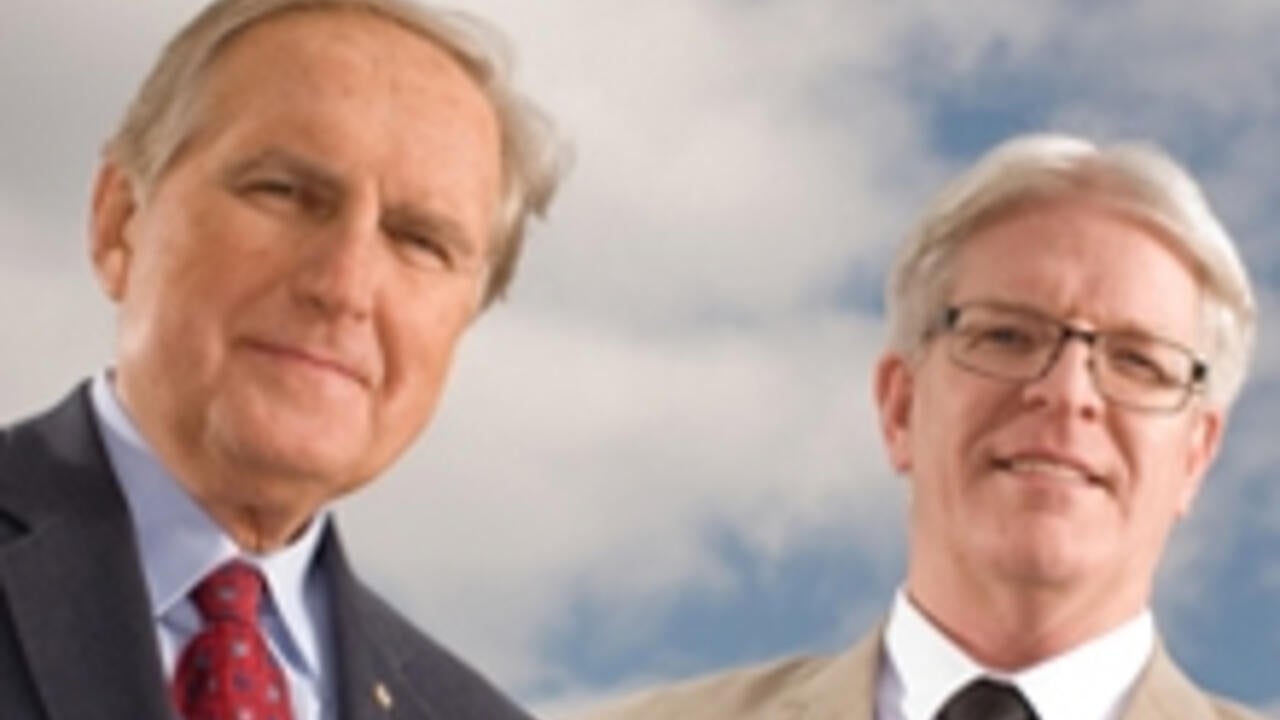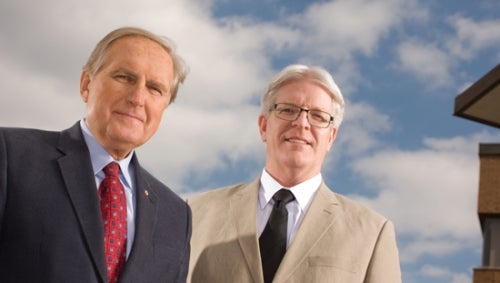
Building the Canadian Index of Wellbeing
The Canadian Index of Wellbeing, headquartered at Waterloo, goes beyond GDP in measuring the quality-of-life factors that matter to Canadians.

The Canadian Index of Wellbeing, headquartered at Waterloo, goes beyond GDP in measuring the quality-of-life factors that matter to Canadians.
By Staff Communications & Public Affairs
Hon. Roy Romanow (left) and Professor Bryan Smale. Photo Credit: Jonathan Bielaski
Step aside, GDP. An innovative initiative is underway at Waterloo to demonstrate that measuring well-being is as important as measuring money.
The Canadian Index of Wellbeing Network, directed by recreation and leisure studies professor Bryan Smale, has developed a composite index to benchmark the nation's state of well-being.
“Most Canadians realize that our well-being cannot be measured by just narrow economic measures like the GDP,” said the Hon. Roy Romanow, co-chair of the network’s advisory board at the official launch in April 2011.
“The Canadian Index of Wellbeing is a national tool for tracking and reporting on our overall well-being, on the things that matter to Canadians. The Index provides a snapshot of our country’s progress – or lack of it.”
Researchers say using measures such as the GDP as a surrogate for well-being are misleading because they make no distinction between economic activity that creates benefit and that which causes harm. They also ignore many genuine contributions to well-being, such as volunteer work and unpaid caregiving.
The Canadian Index of Wellbeing covers eight areas of life in Canada: our standard of living, our health, the vitality of our communities, our education, the way we use our time, our participation in the democratic process, the state of our leisure and culture, and the quality of our environment. These areas were chosen based on the values of Canadians, through an in-depth public consultation process across Canada.
The Canadian Index of Wellbeing Network is an independent, non-partisan group of national and international leaders, researchers, organizations, and individuals. It began its work over a decade ago, but didn’t have a permanent home until it came to Waterloo. Romanow says Waterloo was an obvious choice.
“Waterloo’s Faculty of Applied Health Sciences has been an international leader for over 40 years in research related to promoting health and optimizing quality of life,” says Romanow. “They have a proven track record in delivering and translating research to drive behaviour and policy change. It was a natural fit.”

Read more
Shop Canadian this holiday season with festive porch plants, fashion-forward apparel, craft spirits and more from Waterloo entrepreneurs

Read more
From pumpkin patches to haunting nightmares, a proud Waterloo alum shares how Snyder’s Farm evolved into one of Ontario’s final destinations for Halloween

Read more
Waterloo welcomes 2,800 new graduates to its alumni club and celebrates their bold new journeys
The University of Waterloo acknowledges that much of our work takes place on the traditional territory of the Neutral, Anishinaabeg, and Haudenosaunee peoples. Our main campus is situated on the Haldimand Tract, the land granted to the Six Nations that includes six miles on each side of the Grand River. Our active work toward reconciliation takes place across our campuses through research, learning, teaching, and community building, and is co-ordinated within the Office of Indigenous Relations.